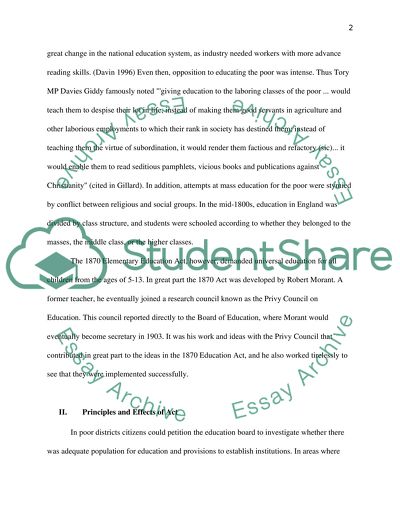Cite this document
(The Impact of the 1870, 1902 & 1918 Education Acts in the UK Research Paper, n.d.)
The Impact of the 1870, 1902 & 1918 Education Acts in the UK Research Paper. Retrieved from https://studentshare.org/education/1567385-critically-analyse-the-impact-of-the-1870-1902-1918-education-acts-on-society-and-education-with-particular-reference-to-linkage-of-policy-between-the-three-acts
The Impact of the 1870, 1902 & 1918 Education Acts in the UK Research Paper. Retrieved from https://studentshare.org/education/1567385-critically-analyse-the-impact-of-the-1870-1902-1918-education-acts-on-society-and-education-with-particular-reference-to-linkage-of-policy-between-the-three-acts
(The Impact of the 1870, 1902 & 1918 Education Acts in the UK Research Paper)
The Impact of the 1870, 1902 & 1918 Education Acts in the UK Research Paper. https://studentshare.org/education/1567385-critically-analyse-the-impact-of-the-1870-1902-1918-education-acts-on-society-and-education-with-particular-reference-to-linkage-of-policy-between-the-three-acts.
The Impact of the 1870, 1902 & 1918 Education Acts in the UK Research Paper. https://studentshare.org/education/1567385-critically-analyse-the-impact-of-the-1870-1902-1918-education-acts-on-society-and-education-with-particular-reference-to-linkage-of-policy-between-the-three-acts.
“The Impact of the 1870, 1902 & 1918 Education Acts in the UK Research Paper”. https://studentshare.org/education/1567385-critically-analyse-the-impact-of-the-1870-1902-1918-education-acts-on-society-and-education-with-particular-reference-to-linkage-of-policy-between-the-three-acts.


